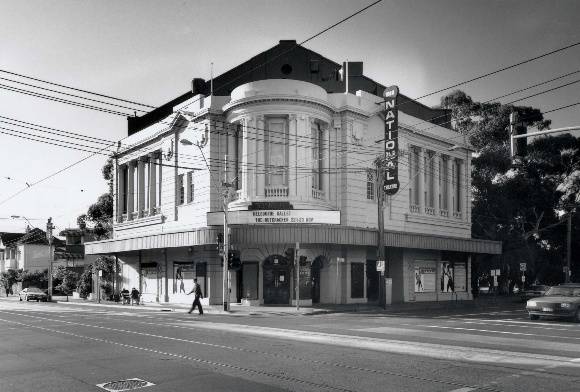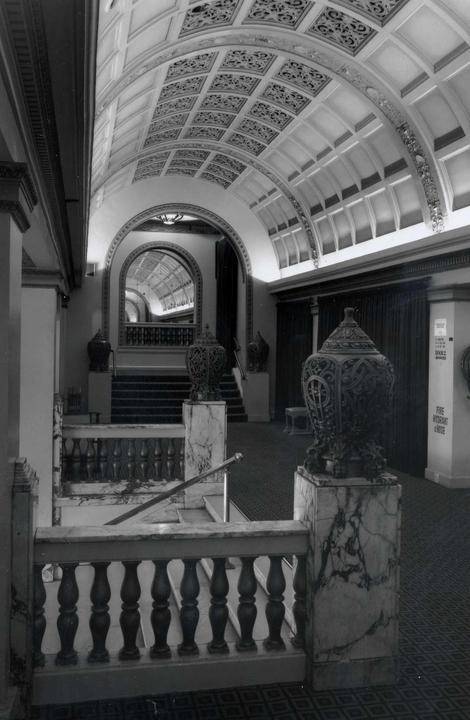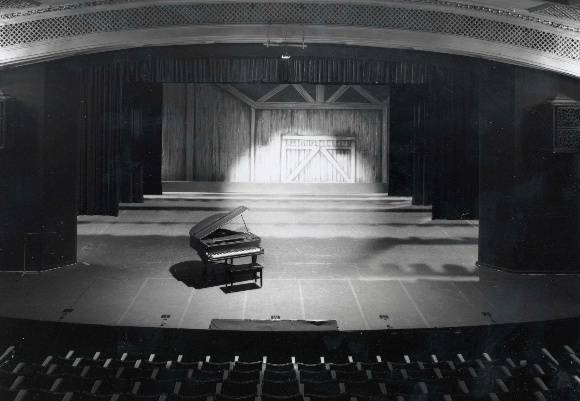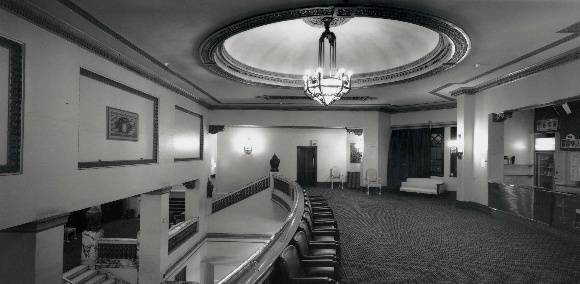| Back to search results » | Back to search page » |
|
Former Victory Theatre
Other NameNational Theatre Location20 Carlisle Street,, ST KILDA VIC 3182 - Property No B7165
File NumberB7165LevelState |
|
Statement of Significance
What is Significant? The Victory Theatre was initially constructed in 1920-21 to a design by the architect Cecil F Keeley. It was the second biggest cinema in Melbourne at the time with capacity for an audience of three thousand; the exterior was extremely grand. It was one of the first of the grand 1920s picture palaces in Melbourne. It is now one of Melbourne's oldest surviving picture theatres, and still operates occasionally as a cinema. In the late 1920s the theatre was owned by a consortium that included film entrepreneur Frank W Thring, who became the managing director of Hoyts and later set up his own company Efftee Films. In 1928 the theatre directors commissioned extensive alterations to designs by the architect C H Ballantyne. These reduced the seating capacity to 2,550 and made the cinema more luxurious, perhaps to compete with the newly built Palais on the St Kilda foreshore a short distance away. The works included a grand entrance foyer with panelled walls and mosaic tiled floor, a barrel vaulted mezzanine promenade and an upper lounge, and a new proscenium arch. A central marble staircase replaced the two original side staircases.
In 1971 the theatre was purchased by the National Theatre Movement for use as its permanent home, and opened again in 1974. The National Theatre was established in 1935 by Soprano Gertrude Johnson (1894-1973) to provide greater opportunities for Australian artists by fostering training in drama, dance and opera and to form professional companies to undertake national tours. The changed use required substantial changes to the theatre: the stalls were converted into studios, with the original balcony being extended down towards a new stage area, a new orchestra pit and a fly tower were constructed, the auditorium and foyers were refurbished and backstage facilities were completed. Since 1974 the theatre has operated continuously as a live venue, though films are shown on an irregular basis.
The Victory Theatre is a symmetrical Classical Revival building, and is a fine example of monumental Beaux Arts theatre design. The walls are rendered with banded rustication and on the first floor are giant columnar screens and an entablature, both in the Ionic order. The theatre is on a corner site, and on both Carlisle and Barclay Streets are the two similar principal facades, with a cantilevered canopy sheltering the shops and entrances. The external side walls have exposed brick keying for stucco treatment which was never completed. The main hall inside is aligned on the diagonal axis, and in the triangular entrance foyer a grand marble staircase ascends to a coffered barrel vaulted mezzanine lounge and promenade. The front of house section is the most prominent, intact, and architecturally important part of the building, while the main hall is largely intact though divided by the 1970s mezzanine floor structure. Objects of note housed in the building include an early carbon arc slide projector; two c1940 Gaumont-Kalee carbon arc projectors transferred from the Regent Theatre in the 1950s; and a rare collection of seats from the Tivoli Theatre, Melbourne, which were acquired by the National Theatre Company after the theatre burned down in 1967.
How is it Significant? The Victory Theatre is significant for architectural, historical and social reasons at a State level.
Why is it Significant? The Victory Theatre is historically significant as one of Melbourne's most celebrated picture theatres during the 1920s and because of its association with the early Australian film industry. It is of historical significance for its associations with the National Theatre Movement, and its founder, Gertrude Johnson, a significant figure in the arts in Victoria both as a performer and a pioneering arts administrator. The theatre also has associations with national broadcaster John Cargher AM, general manager of the company from 1969 to 1989, who oversaw the alterations to the building and a major re-organisation of the company. As a pioneering professional arts company, the National Theatre has important associations with the history and development of the performing arts in Australia. Many significant performing artists, directors and writers have been associated with the company throughout its history.
The exterior of the Victory Theatre is architecturally significant as a fine example of a cinema designed in the monumental Beaux Arts style. The most notable elements of the interior are the entrance foyer, promenade, upper lounge and dress circle with their elaborate fibrous plasterwork and early decorative features and light fittings.
The Victory Theatre is historically and socially significant for its associations with one of the most popular forms of mass entertainment, the cinema, during its boom years of the interwar period. The 1928 alterations reflect the influence of the more luxurious picture palace style of cinema. The collection of movable objects is significant for assisting in an understanding of the technology, history and development of cinema. The building is valued by the wider community as a venue for films, festivals and theatrical performances over a long period of time. It is also valued as the home of the National Theatre Movement, recognised as a significant cultural institution in the Victorian and Australian arts scene.
Classified: 01/05/2006
Group
Recreation and Entertainment
Category
Theatre







